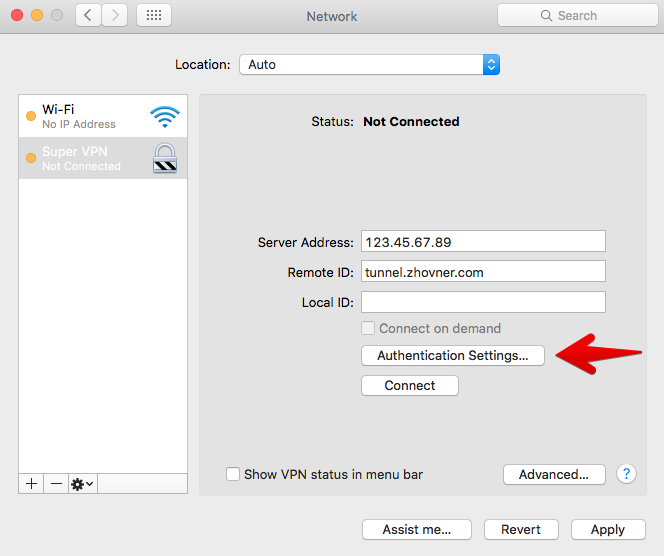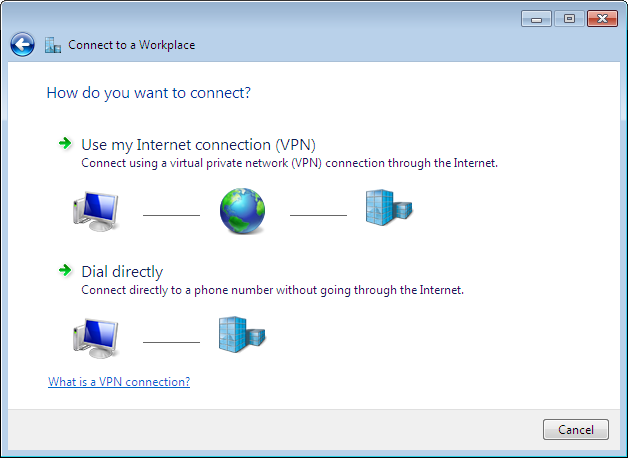

- Strongswan certificate not showing up in mac vpn settings how to#
- Strongswan certificate not showing up in mac vpn settings install#
- Strongswan certificate not showing up in mac vpn settings update#
- Strongswan certificate not showing up in mac vpn settings software#
- Strongswan certificate not showing up in mac vpn settings password#
Strongswan certificate not showing up in mac vpn settings software#
Select the VPN software that you want to allow.In Windows Defender Firewall click Allowed apps.Go to Control Panel > Click System and Security.If the problem persists, you should enable them in Advanced Windows Firewall settings. Sometimes VPN clients use 4500, 500 UDP, and 1723 for TCP. The solution for this is to enable a VPN in Windows Firewall. Most of the time, the culprit could be your Windows Firewall settings. Select Add an exclusion, then find and select your VPN client executable fileĪdd an exception in Windows Firewall.Click Virus & Threat protection settings.
Strongswan certificate not showing up in mac vpn settings update#
Strongswan certificate not showing up in mac vpn settings how to#
Your antivirus may interfere with your VPN connections, This can be resolved by adding an exception in your antivirus protection settings.) Here’s how to do it in Windows Defender, a built-in antivirus tool that comes with every Windows 10 installation. Make an exception in your antivirus settings.
Strongswan certificate not showing up in mac vpn settings password#
Once the import is complete, right-click the OpenVPN icon in the system tray and connect to the server you want (it will ask for a username and password which you already have). If you want to import them in bulk, find the config folder in your OpenVPN directory and paste all of the configurations there. You can only import one configuration at a time through the client. After that, download the configuration files for OpenVPN from the company that you bought the VPN from and load them into your OpenVPN client. Simply download the OpenVPN app from the website and complete the setup wizard. If you do not want to use the dedicated app, you can use the OpenVPN protocol. You can follow the process as detailed above and have a VPN set up and ready in a few minutes. All of the modern VPNs have dedicated apps that you can use. Setting up a VPN on Windows 10 and Windows 11 is quite easy. Check the EAP radio button and choose Microsoft: Secured password (EAP-MSCHAPv2)(encryption enabled).Get NordVPN How to set up a VPN on Windows 10 On the VPN adapter, choose properties, and go to the Security tab. The security properties for the VPN will need to be modified under the network adapter. Add in the pre-shared key and username and password. Choose the L2TP/IPSEC with pre-shared key option under VPN type. Place the IP address of your VPN server under server name or address. Choose VPN from the left panel and add a VPN connection. On the Windows 10 machine, open Network and Internet Settings. After the reboot, you will be ready to test your first client.

A reboot will be required on your machine. Open compmgmt.msc, go to Local Users and Groups, and hit properties on the user that you wish to utilize for the VPN. Add a pre-shared key.įinally, you will need to modify a user to be allowed to access the VPN.
Strongswan certificate not showing up in mac vpn settings install#
Choose to install the following server roles.Ĭustom IPSEC policy for L2TP/IKEv2 connection. Choose a role based or feature based installation. To do so, go in to the Server manager, and Add Roles and Features. On the Windows 2012 machine, we will need to install the routing and remote access features. In this example, we will exchange a pre-shared key. A LT2P IPSEC VPN can exchange either a pre-shared key or a certificate.

The second machine, a Windows 10 client, will act as the VPN client.

The first machine, a windows 2012 server will act as the VPN server. In this example, we will set up IPSEC to encrypt communications between two windows machines. IPSEC utilizes IP Protocol 50 (ESP), IP Protocol 51 (AH), and UDP Port 500. IPSEC will also allow the addition of IP restrictions and TCP/UDP level encryption to applications which might not otherwise support it.


 0 kommentar(er)
0 kommentar(er)
